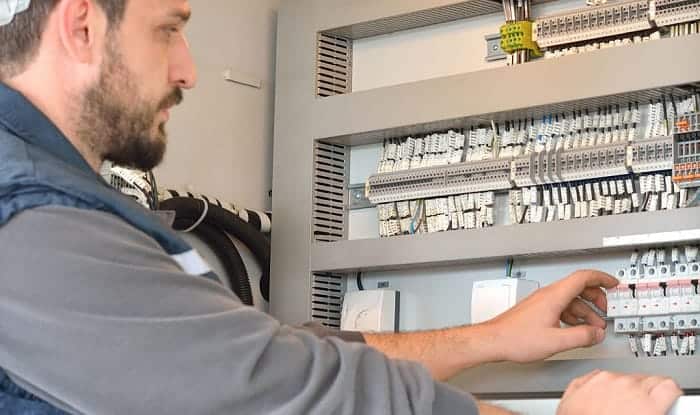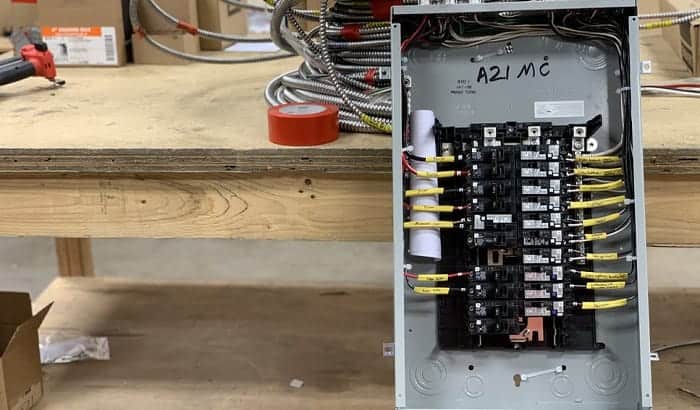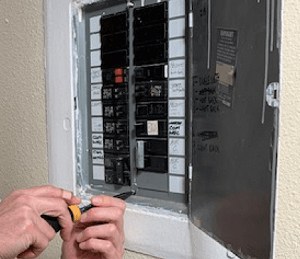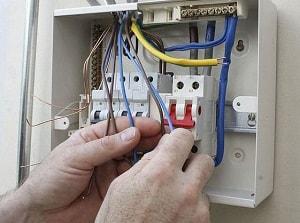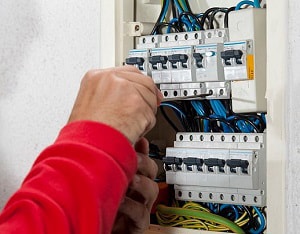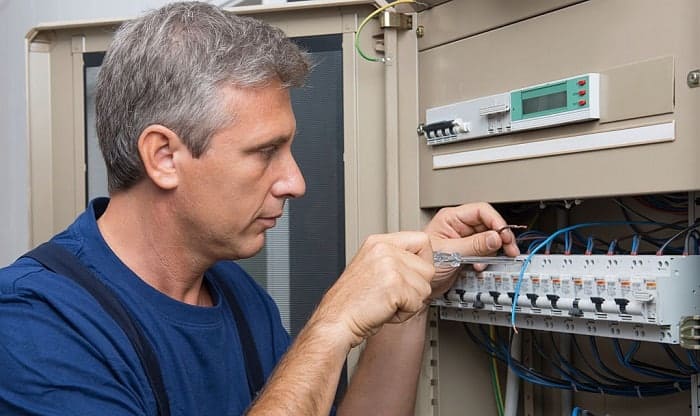Do you have many appliances at home that require many amps? Does your circuit breaker trip when you’re using multiple devices at the same time? Does your circuit breaker have enough capacity for your current demands? If not, do you want to know how to increase circuit breaker amps?
Increasing amps in a circuit mean you have a high electrical demand. If you’re planning to add appliances requiring higher amps, an upgrade is necessary to avoid overloads and tripping.
So, if you’re planning to increase your home’s capacity, this is a step-by-step guide to help with your circuit breaker upgrade task.
Table of Contents
The Tools You Need
Prepare the following before starting:
- Flathead screwdriver for disconnecting wires and uncovering the breaker panel
- Insulated gloves and other equipment for safety
- Flashlight for lightning (optional)
- Multimeter to check amp capacity
- Your preferred circuit breaker with a greater amp capacity
- Copper wire of the appropriate size for your circuit breaker
- Electrical guide table for checking the proper circuit breaker and wire size
- A calculator for computing the formula provided by the on-site guide
The length and thickness of the wire are crucial to consider if you want to increase amperage in a circuit. Of course, the length will depend on the distance that must be covered, and its thickness relies on what your preferred circuit breaker can support.
Be sure to have an on-site guide before starting. It is the best reference for both licensed electricians and DIYers to compute the required breaker amp. It also tells you what wire size you need for your circuit breaker.
Also, when working on systems like this, always think of your safety. Ensure that you have your insulated gloves on at all times and that you’re wearing rubber-soled shoes to prevent being shocked. Don’t forget your eye protection, too!
Step-By-Step Guide to Increase Circuit Breaker Amps
Follow this step-by-step procedure to learn how to upgrade your circuit breaker.
Step 1: Get your Needed Circuit Breaker
Using a calculator, compute for the designed current you would need to install. To do this, get the total watts of all equipment to be plugged in your system, then divide it by your power source’s voltage.
If your appliances come with a kW current rating, multiply it by 1000 to get the correct watt rating.
Once done, check a guide table to find your minimum breaker amp capacity.
Step 2: Choose the Right Wire Size for your Circuit Breaker
After knowing your needed circuit breaker, you can now check the appropriate wire size using the guide table. Look for the cable size column—it should be in the same line as the circuit breaker capacity. You should also see the maximum cable length you can install together with your circuit breaker.
To learn more, watch this video by LEARN ELECTRICS, where they discuss finding a suitable circuit breaker and wire size for your electrical system.
Step 3: Remove the Cover of your Circuit Breaker Panel
Before you start anything with your breaker panel, turn off first the main breaker or disconnect your primary power source for safety. Then, using your flathead screwdriver, gently remove the cover of your circuit breaker panel.
It’s recommended that you first unscrew the four corners of the cover. Once done, loosen the two on the sides. Then while holding the cover, completely remove the remaining screws with your bare hands. This way, you can prevent the lid from falling.
Step 4: Disassemble the Circuit Breaker and Wire
First, decide which breaker you want to upgrade. Once you’re sure of that, begin disassembling the connection. Unscrew the cables connected to the circuit breaker and the neutral wire. Afterward, disconnect the other end of the wire, which connects to your outlets.
Note: If the installed wire meets the minimum requirements said on the guide, you don’t need to change it.
Step 5: Install your New Circuit Breaker and Line Wire
Install both the new wire and new circuit breaker. Add tags to both for more organized electrical wiring and easy tracing of your lines during troubleshooting.
Pro Tip: Temporarily tie the replacement to the end of your old wire before pulling the other end of your wire for easy installation of your new line.
Step 6: Check and Test your Line Connections
Before testing, you should replace the cover of your panel for safety. Once covered again, restore power and turn on all breakers. Then, use your multimeter to check your supply. Always remember to have your safety equipment on, especially because you’re now working with a live power supply.
Why Do You Need to Upgrade your Circuit Breaker?
Most of us need to upgrade our circuit breaker due to the high current demand for our appliances or system. For example, if you want to plug in an electric heater or install a powerful water system in your house, you may need to upgrade the wiring and breakers in your system.
This is because your existing breaker may not be enough for these high current rating appliances, leading to overloading and breaker trips. However, if your breaker trips even without a heavy load, consider checking your existing wiring. If you have damaged or exposed wires, they could touch, leading to a short circuit.
It is essential that your wiring and breaker match in terms of capacity. Also, consider that most breakers can only reliably support 80 percent of their maximum current rating. There may be instances where a breaker can accommodate currents above the 80 percent mark, but only for a short time.
To understand more about the importance of a circuit breaker, read through the top-rated circuit breaker article. This lists some of the best breakers you can find in the market today. It will also give you an idea of what you should look for in a circuit breaker. You can make an informed decision when you know what works best for you.
Safety First
For a system to be safe, each component must be capable of handling the amperes you’re working with. That’s why, if you’re upgrading your circuit breaker, you have to ensure that your cables and outlets can withstand the higher loads you’re planning. Otherwise, those could be the point of failure in your system.
One more thing: when you’re working with electricity, ensure that you know every detail of the project you’re working on. If you’re not sure, do your research. Find information from reputable sources. And if you’re still confused, it’s best to consult a professional electrician.
These licensed professionals are trained to ensure your system will stay safe.
Conclusion
Increasing amperage of your circuit breaker is recommended if you want to run or install high-powered appliances. But you should also consider whether your wiring and outlets can withstand the additional load you’re going to apply.
It would be wise to double the currently required amperes in your breaker system to avoid the hassle of upgrading your system in the future. That way, even if you add more machines, devices, and equipment, your electrical circuit will not trip.
So, why are you upgrading your system? Are you planning to install bigger appliances? Or are you expanding your house? Let me know in the comments below how you upgraded your system! Share your tips on how to increase circuit breaker amps!

I am Edwin Jones, in charge of designing content for Galvinpower. I aspire to use my experiences in marketing to create reliable and necessary information to help our readers. It has been fun to work with Andrew and apply his incredible knowledge to our content.

